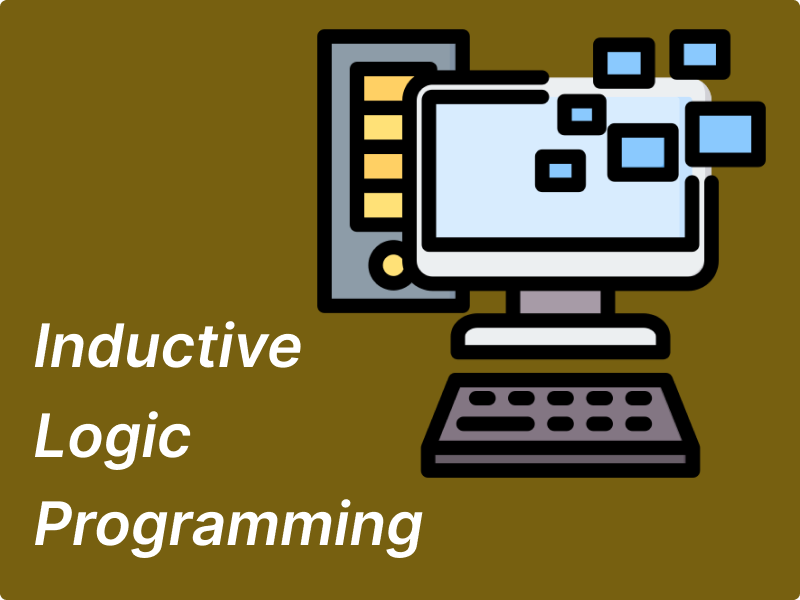Inductive Logic Programming (ILP) is a subfield of machine learning and artificial intelligence that combines concepts from both logic programming and machine learning. It focuses on learning logic programs from examples and background knowledge, to induce general rules or hypotheses that accurately describe a given set of observations.
Underlying Concepts:
-
Logic Programming: Logic programming is a programming paradigm based on formal logic, where programs are expressed as sets of logical clauses. Prolog is the most commonly used logic programming language
-
Inductive Learning: Inductive learning is a machine learning paradigm where general rules or hypotheses are induced from specific examples. It aims to generalize from observed data to make predictions or classifications on unseen data.
-
First-Order Logic: First-order logic is a formal language used to express relationships and properties in terms of objects, predicates, functions, and quantifiers. It provides a foundation for expressing knowledge in a precise and structured manner.
Equations and Examples:
Let's illustrate the concepts of ILP with a simple example:
Consider a dataset of animal observations, where each animal is described by features such as whether it has fur, whether it lays eggs, and whether it is warm-blooded. The goal is to learn a logic program that accurately distinguishes between mammals and non-mammals based on these features.
-
Background Knowledge: In ILP, background knowledge represents domain-specific information or constraints. For example, we might have the following background knowledge:
-
Mammals are warm-blooded animals.
-
Mammals give birth to live young (i.e., they do not lay eggs).
-
Not all warm-blooded animals are mammals.
-
-
Examples: We have a set of observations with their corresponding labels:
-
Example 1: A cat has fur, is warm-blooded, and gives birth to live young.
-
Example 2: A snake has no fur, is cold-blooded, and lays eggs.
-
-
Hypothesis Space: In ILP, the hypothesis space consists of logical clauses that describe the target concept. For example, a hypothesis could be represented as:
- If an animal has fur and is warm-blooded, then it is a mammal.
-
Induction Process: ILP algorithms search the hypothesis space to find the most suitable logic program that fits the observed data and background knowledge. The algorithm tries to maximize the coverage of positive examples (i.e., mammals) while minimizing the coverage of negative examples (i.e., non-mammals).
Example ILP Algorithm:
Let's outline a simplified ILP algorithm for learning the concept of mammals:
-
Initialize Hypothesis: Start with an empty hypothesis or a set of initial candidate hypotheses.
-
Search Space: Explore the space of logical clauses that describe the concept of mammals, guided by background knowledge.
-
Evaluation: Evaluate each candidate hypothesis based on its coverage of positive and negative examples.
-
Refinement: Refine the hypotheses by adding or removing clauses to improve their accuracy on the training data.
-
Stopping Criterion: Terminate the search when a satisfactory hypothesis is found or when a predefined stopping criterion is met (e.g., the maximum number of iterations).
Advantages of ILP:
-
Interpretability: ILP produces human-readable logic programs, making it easier to interpret and understand the learned concepts.
-
Incorporation of Background Knowledge: ILP allows the incorporation of domain-specific background knowledge, enhancing the learning process and improving the quality of induced hypotheses.
-
Logical Reasoning: ILP combines logical reasoning with statistical learning, enabling the discovery of complex relationships and patterns in data.
Drawbacks of ILP:
-
Computational Complexity: ILP algorithms can be computationally expensive, especially for large datasets or complex hypothesis spaces.
-
Expressiveness Limitations: The expressiveness of ILP may be limited by the chosen logic representation or the complexity of the target concept.
-
Handling Noise and Incomplete Data: ILP may struggle to handle noisy or incomplete data, as it relies on precise logical representations.
Conclusion:
Inductive Logic Programming (ILP) is a powerful approach to learning logical rules from data, combining concepts from logic programming and machine learning. By inducing logic programs from examples and background knowledge, ILP enables the discovery of complex patterns and relationships in data while producing interpretable and understandable models. While ILP has its challenges, it offers significant potential for applications in domains where logical reasoning and structured knowledge representation are essential.
If you found the article helpful, consider sharing it and subscribe to IbepyProgrammer.
Thank you.






